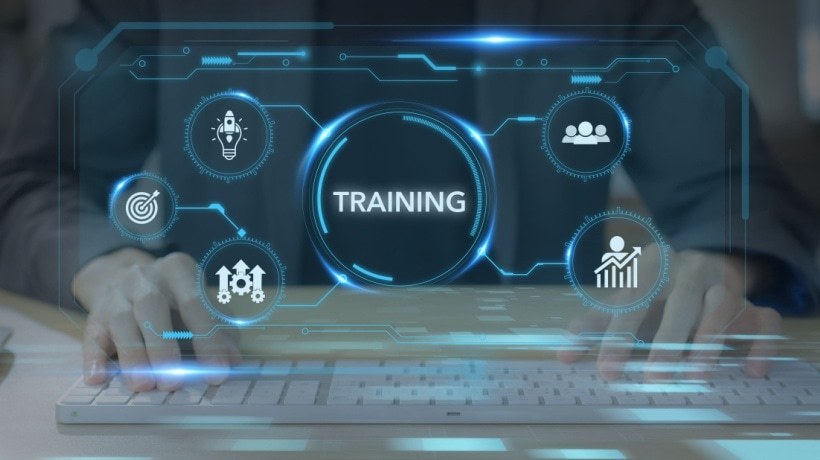Change Behavior. Drive Business Results: The Challenge Of Traditional Training
- In 2024, organizations spent approximately $398 billion globally on training, yet 70% of employees report they don't have the skills needed to do their jobs effectively [1].
- Only 12% of employees apply new skills learned in training to their jobs [2].
- A Harvard Business Review study found that 75% of managers are dissatisfied with their company's Learning and Development (L&D) programs.
Training is supposed to change behavior and drive business outcomes. These stats say that despite massive investment, traditional training often fails to solve the real business challenges it was designed to address. The problem isn't that organizations lack training. It's that most training programs focus on the 10% of learning (formal training) rather than the 70% (on-the-job experience) where real behavior change happens. When business challenges persist despite training efforts, it's time to rethink the approach.
Beyond Information: Training That Transforms
Business challenges—whether they're declining mortgage renewal rates, safety incidents, or employee turnover—are typically behavior-driven challenges that require a new kind of upskilling: behavior-driven solutions that fit seamlessly into daily work. The traditional training approach often misses the connection of training to business outcomes. Learning and Development initiatives frequently exist in their own silo, disconnected from strategic business priorities. Even when training does attempt to address business needs, the process typically looks like this:
- Deploy formal training based on perceived skills gaps (e.g., customer relationship workshops)
- Hope it improves business metrics somehow
- Struggle to demonstrate any measurable impact
The fundamental disconnect lies between training content and actual behavior change, the "transfer problem." This has been a persistent challenge for L&D. Information alone rarely changes behavior, and training that isn't directly tied to specific business outcomes rarely demonstrates value.
The huge strides in AI technology are opening up new ways to solve this problem. It's now possible to deliver training in the flow of work, where employees can immediately practice and apply new behaviors to solve real business challenges.
The Power Of Daily Practice
What sets apart organizations that successfully address business challenges through training? They focus on transforming daily behaviors through consistent practice, supporting and reinforcing the classroom training sessions.
Consider this example: A financial services company was struggling with mortgage renewal rates that traditional sales training hadn't improved. Their breakthrough came when they shifted from classroom training to daily, bite-sized activities integrated into work routines. Mortgage advisors received simple activities like, "Before your next renewal call, identify three life transitions the customer might be experiencing and note how each could affect their mortgage needs."
These activities, practiced consistently over a 10-12 week initiative, create lasting habits that improve the behaviors essential to successful renewals: maintaining customer relationships, conducting effective pre-renewal meetings, and addressing customer needs at moments of life transition. The key difference is transforming knowledge into daily actions through:
- Context-specific practice
Activities performed in the actual environment where challenges occur - Immediate application
Learning applied to real situations, not hypothetical scenarios - Consistency over time
Regular practice that builds neural pathways for new habits - Gradual progression
Skills built incrementally through increasingly complex activities
This approach works because it aligns with how our brains actually form new habits. As psychologist Daniel Kahneman explains in Thinking, Fast and Slow, behavior change requires moving newly learned strategies (slow thinking) into unconscious habits (fast thinking)—something that only happens through consistent practice.
Solving Real Business Challenges: A Systematic Framework
To transform business challenges through activity-based learning, follow this systematic framework:
1. Identify The Business Challenge And Impact Areas
Begin with clear metrics that define the business challenge (e.g., mortgage renewal rates below industry average). Then identify the specific business impact areas where the problem manifests (e.g., inadequate pre-renewal customer contact).
2. Address Performance Gaps Through Targeted Practices
Identify precise behaviors that need improvement (performance gaps) and the workplace practices that will close those gaps. For mortgage renewals, this might include conducting proactive customer check-ins or running structured pre-renewal meetings.
3. Design Practice-Based Activities In The Flow Of Work
Create bite-sized activities that target specific behaviors and integrate seamlessly into daily workflow. These activities should be quickly understood and completed during regular work, not as separate training sessions.
- Example
"During your next client call, identify one upcoming life transition they mentioned and discuss how it might affect their financial needs. Note their response and follow up appropriately."
4. Deliver Activities Consistently Through Structured Initiatives
Deploy activities over 10-12 week initiatives that allow for proper habit formation. For maximum effectiveness, personalize each learner's activity sequence based on:
- Role-specific needs.
- Individual skill levels.
- Learning preferences.
5. Measure Impact At Multiple Levels
The most innovative organizations measure impact with a multilayered approach:
- Behavior change assessment
Conduct before-and-after surveys where both learners and their managers rate skill development in targeted areas - Observable behavior tracking
Document specific new behaviors that emerge after training - Business outcome measurement
Track improvements in the key metrics related to the original business challenge (e.g., mortgage renewal rates)
Conclusion: Training For Business Impact
Solving business challenges through training requires more than information delivery. The future of employee learning is going to happen in the flow of work—in the 70% of learning that happens on the job.
When organizations shift from passive learning to active practice, from information to transformation, they create lasting behavior change that directly impacts business outcomes. The most effective training doesn't just build skills—it solves problems through daily actions that gradually become the new normal.
By embedding learning into the flow of work through consistent, bite-sized activities, organizations can finally bridge the gap between training investments and tangible business results—transforming not just what employees know, but what they actually do every day. This is the future of upskilling in action.








